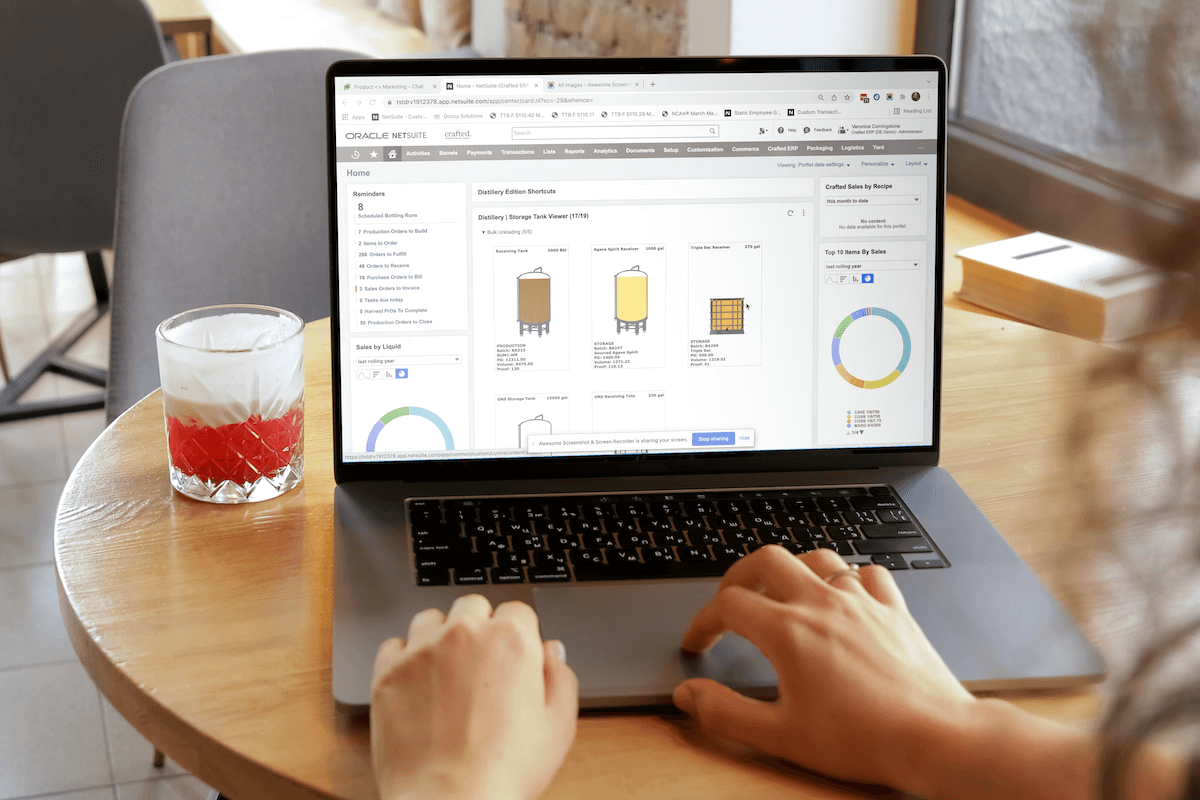“Ah, changes are taking the pace I’m going through”
David Bowie knows a thing or two about managing change, but what about your IT team?
If you’re planning an ERP transformation and your IT team isn’t exactly throwing out the red carpet, you’re not alone. Resistance from IT is a common (and predictable) speed bump during ERP adoption, especially in the beverage industry.
Why? Because when ERP decisions are driven by finance, operations or ownership without IT at the table, teams tasked with implementation often feel like they’re being handed a mission without a map.
The good news: IT pushback isn’t a sign of failure. It’s a signal. With the right strategy, that resistance can turn into a powerful force for your project’s success.
IT’s Role in Beverage ERP Transformation Projects
Beverage companies, from fast-growing distilleries to national distributors, are achieving real success by shifting their approach to IT engagement during ERP transformations. Instead of sidelining technical teams, they’re involving them early, addressing their concerns head-on, and building long-term alignment around the role of cloud technology.
It requires a deliberate strategy, one that aligns with IT’s priorities, respects their expertise, and positions them as a critical part of the ERP transformation. For companies that get it right, the results equal faster time-to-value and stronger internal alignment.
Here’s what those companies are doing differently, and how you can follow their lead.
1. Understand Why IT Resists — and Respect It
IT teams don’t resist change because they’re difficult. They resist because they see risk differently. Especially in the highly regulated, tech-complex world of beverage operations, their hesitation to ERP transformation is grounded in real concerns.
Common IT Concerns:
- Fear of job displacement as cloud systems reduce infrastructure needs
- Increased workload during transition phases
- Difficulty integrating legacy systems with new platforms
Specific Industry Pain Points:
- Navigating compliance across multiple jurisdictions and license types
- Managing real-time inventory across distributed warehouses
- Maintaining production traceability for quality control
- Handling integrations with point-of-sale, logistics and compliance tools
Acknowledging these factors shows respect for the complexity your IT team manages daily and builds a foundation for trust.
2. Build Your Coalition Early — and Put IT on the Front Lines
One of the most common mistakes leaders make is involving IT in the conversation after decisions have already been made. To ensure your ERP transformation succeeds, involve IT early and meaningfully. When IT has a hand in shaping the process, they’re more likely to support the outcome and are more equipped to champion it.
Strategies That Work:
- Create cross-functional ERP evaluation teams that include IT, finance, procurement and operations.
- Empower IT to lead technical requirements gathering and integration planning.
- Prioritize conversations around security, control and system architecture.
Crafted, built in NetSuite, offers 99.98% uptime, robust role-based access control, and secure cloud infrastructure. These capabilities speak directly to IT concerns and demonstrate a shift away from internal maintenance burdens.
3. Reframe the “Why” in Terms That Matter to IT
For IT teams, the real value of ERP transformation isn’t in streamlined accounting or cleaner procurement reports. It’s in reduced tech debt, improved integration frameworks, and the ability to focus on more strategic initiatives.
Key Messages That Resonate:
- “We’re consolidating five disconnected systems into one centralized platform.”
- “The ERP vendor handles maintenance, backups and disaster recovery, freeing you to work on higher-impact tasks.”
- “You’ll be leading the charge on automation, workflow optimization and API-based integrations.”
ERP transformation success hinges on a compelling narrative that speaks to each team’s role in the future state. Reframing ERP in terms of capability rather than constraint helps align IT’s goals with the broader business vision.
4. Use Phased Rollout & Practical Implementation Tactics
Attempting a full-scale ERP rollout across locations, departments or brands can cause eyes to glaze over and overwhelm. Instead, start with a phased approach that gives IT space to adapt and excel.
Start Small. Scale Smart.
- Pilot one location or business unit with critical modules, such as inventory, production, finance or sales.
- Demonstrate measurable wins early to build trust and momentum.
- Use Crafted ERP’s change management kits, tailored for beverage workflows.
Equip your IT team with targeted training on cloud administration, integration design and security protocols. Identify and develop internal ERP champions within the team to lead and support their peers throughout the implementation process.
Crafted’s support model includes dedicated training tracks and role-specific enablement to help IT staff step confidently into their new roles.
5. Defuse the “But What About…?” Objections
Even with early involvement and good intentions, objections will surface, especially from IT. Most of the hesitation you’ll encounter boils down to three core areas: data, integration and support.
These are fair concerns. They’re precisely the kinds of questions you want your IT team asking because it means they’re thinking long-term, not just about go-live.
The key is to answer clearly, specifically and proactively. With Crafted, turn uncertainty into alignment by:
Data Migration
- Follow a proven methodology with pre-launch validation and post-launch audits.
- Allow IT to lead dry runs and establish fallback checkpoints.
- Use parallel systems testing to mitigate perceived risk.
Integration Worries
- NetSuite’s open API architecture enables secure, scalable connectivity.
- Crafted offers pre-built integrations for common beverage platforms, including POS systems, TTB tracking, compliance portals and logistics providers.
Support During Transition
- Crafted’s “Hypercare” period ensures white-glove support post-launch.
- 24/7 help and dedicated customer success managers give IT backup when they need it most.
When you answer the “what-ifs” with specifics instead of generalities, you move the conversation from hesitation to buy-in. You replace doubt with clarity, and that’s when real ERP transformation happens.
Don’t Just Win Go-Live — Win the Long Game
IT adoption is not a one-time event. It’s a culture shift that requires ongoing engagement, training and communication.
Sustain IT Momentum
- Conduct monthly ERP optimization reviews with IT
- Launch internal demos of new functionality, features or dashboards
- Celebrate measurable IT wins — time saved, tickets reduced, automations launched
Institute the best practice of continuous improvement cycles, particularly in this highly regulated industry where systems evolve in tandem with the business.
What to Do Today: A Beverage ERP Readiness Checklist
Create immediate momentum and ensure every stakeholder knows their role in moving the project forward, using a task list from the get-go like this one:
| Action Item | Owner | Deadline |
| Schedule a strategic ERP kickoff with IT leadership | CFO/Owner | This week |
| Conduct an IT readiness assessment | Procurement Lead | Within 5 business days |
| Request an IT-specific implementation plan from ERP vendor | Project Manager | By next vendor call |
| Define measurable IT success KPIs for ERP rollout | IT Lead & Finance | Before pilot phase |
IT Resistance to ERP Transformation is a Leadership Opportunity
When IT pushes back, it’s not obstruction. It’s a signal that they care about doing things right. As a leader, your job is to tap into that expertise and turn cautious realism into confident execution.
Take the smarter route. Whether the next step is evaluating vendors or rolling out a system like Crafted ERP, the approach is clear: bring IT in early, include them meaningfully, and support them with the right tools and training. They won’t just go along with the ERP transformation; they’ll drive it.
The result? A smoother rollout, faster adoption and a technology foundation built to scale with your beverage business.
What’s your answer when IT asks, “But what about…?” If you’re unsure, let’s talk.
![A graphic about Crafted ERP BevX that says the only server your [beverage company] needs is behind the bar](https://www.craftederp.com/wp-content/uploads/2025/07/IT-BevX-Clickbait-1-Server-1024x228.png)






